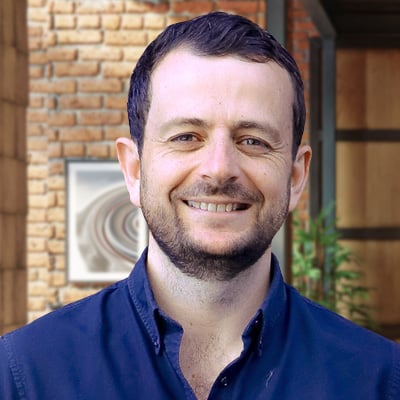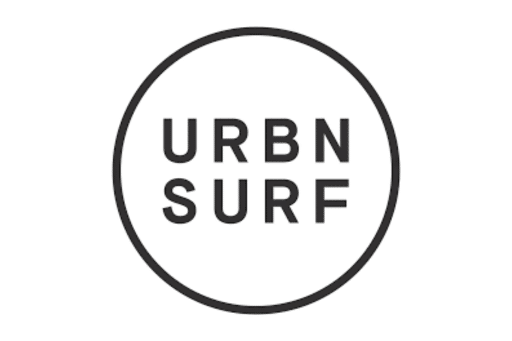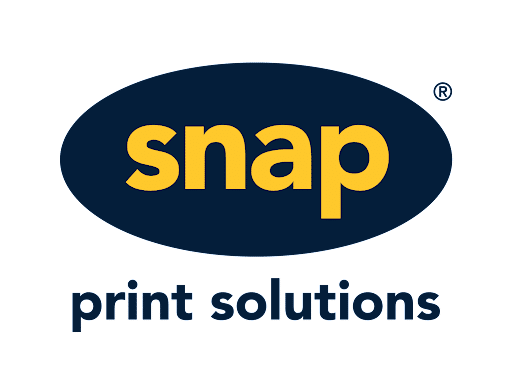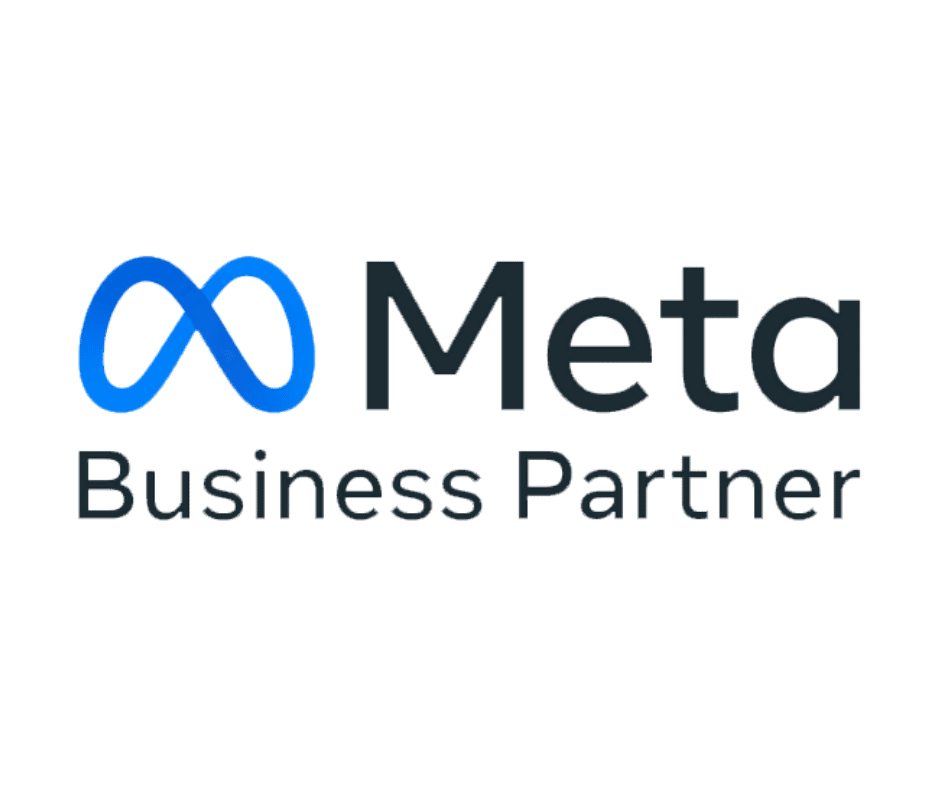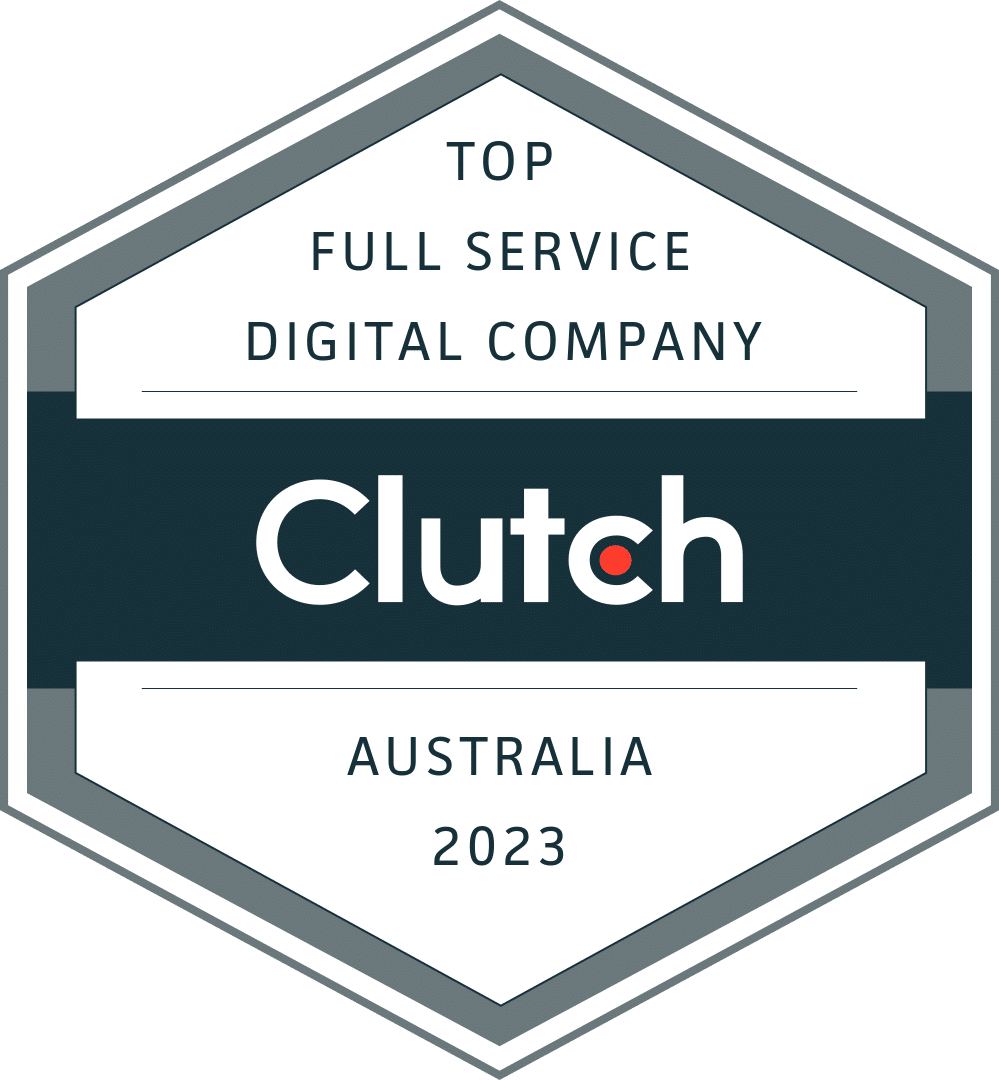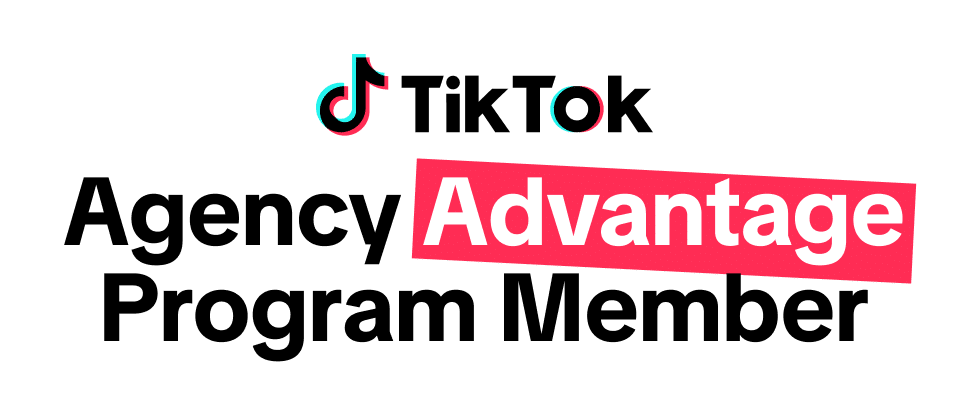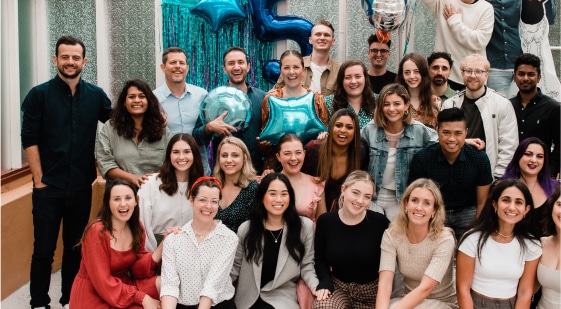The Future of Digital w. Anders Sörman-Nilsson
Episode Description:
Anders Sörman-Nilsson is a futurist, top-selling author and founder of the Sydney-based firm Thinque. In this episode, he discusses what the future of marketing entails and what businesses must do in order to stay relevant for consumers.
Key Takeaways:
- What is a futurist?
- A discussion of the 2030 vision.
- What are the big trends that are important for Australian businesses?
- Green is the new digital.
- The rise of the conscious consumer who wants to know the whole traceable story.
Featuring:
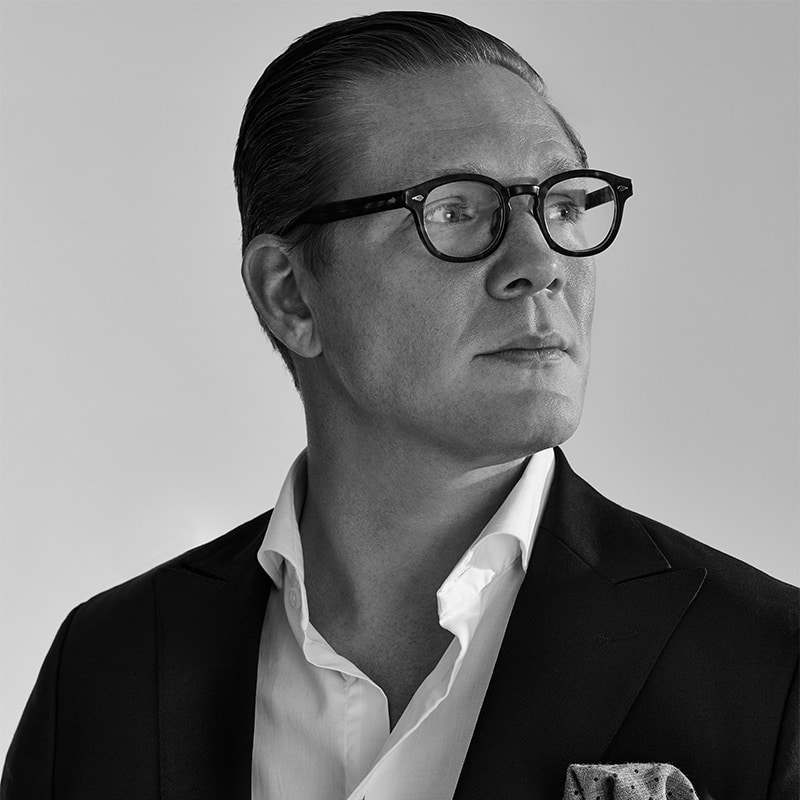
Anders Sörman-Nilsson
About the Guest:
Anders Sörman-Nilsson (EMBA / LLB) is a futurist and the founder of the Sydney-based think tank and trend analysis firm - Thinque, which provides data-based research, foresight and thought leadership assets for global brands across 4 continents. His vision is to disseminate ‘avant-garde ideas which expand minds and inspire a change of heart’, and clients like ING, Microsoft, Apple, Facebook, McKinsey, Jaguar Land Rover, MINI, Rugby New Zealand, and Lego trust his future guidance.
He is an awarded keynote speaker who helps leaders decode trends, decipher what’s next and turn provocative questions into proactive answers. He has published 3 books including ‘Aftershock’ (2020), ‘Seamless’ (2017) and ‘Digilogue’ (2013), is a member of TEDGlobal, and was nominated to the World Economic Forum’s Young Global Leaders in 2019. His futurist thinking has been shared by the Wall Street Journal, Financial Review, Monocle, BBC, Esquire and ABC TV. Follow him on LinkedIn, or go to his website.
Transcript
James Lawrence: Today I'm here with Anders Nilsson. Anders, welcome to the pod.
Anders Sorman-Nilsson: Great to be on your pod today.
James Lawrence: Excellent. So for those of you that don't know, Anders Anders is a futurist and the founder of Sydney based firm Thinque, which provides data based research, foresight and thought leadership assets for global brands across four continents. He's provided research, foresight and business impact for companies such as Apple, Facebook, Edelman, McKinsey, Mercedes-Benz, Oracle, Johnson and Johnson, and many, many more. Anders is an active member of the TEDx global community. His keynote at TEDx in both the US and in Australia. He was nominated to the World Economic Forum's Young Global Leaders Summit in 2015, and was the keynote speaker at the G 2020 Summit in Australia. He's the author of three books, and today we're going to be discussing the future of digital. Anders, welcome again.
Anders Sorman-Nilsson: Great to be on the Smarter Marketer podcast.
James Lawrence: So I thought I'd ask a pretty broad question. So you're a futurist? What is a futurist?
Anders Sorman-Nilsson: So there's a few different ways to kind of explain what I do. I mean, my mum has absolutely no idea what I do for a living. She calls me a son, the one who used to be a lawyer who is now a glorified astrologer. So that's one way to look at things. I think what we do is probably a little bit more evidence based. Although my dear astrology friends might disagree, but I kind of tend to describe it in two ways, either as a reverse historian, which sounds a little bit fluffy, but perhaps more sort of apt as almost like a science fiction author or business. Let me just sort of expand on that a little bit. When it comes to strategy and setting your sights on 2025 or 2030 or 2040, I in some ways strategy is just a thought experiment, right? It's going from point A to point B, it's from present state to future state. And so what us futurists really do is to sit down with leadership teams, with marketing executives etc. And kind of go, where do you want to be in 2035? And let's actually engage in a thought experiment, that scenario plan, and actually come up with a science fiction story of where you want to be. And then secondly, how are we going to tell that story of what our brand is going to be in, say, 2030, 2035? And how are we going to communicate that not just to our internal staff? So they come along on that future odyssey, but of course also to our key stakeholders, our customers, our suppliers, our ecosystem, governments etc. So that's that's what a futurist sort of does. We don't we don't predict the future.
James Lawrence: Yeah, yeah. We don't predict the future. But I like to say that we do help our clients prepare for the future, and we help them co-design the future, because the future hasn't happened yet. So, you know, it's something that we get to affect every day when we go to work and when we as marketers think about what's the kind of narrative that we want our customers and our consumers to, to buy into. Because I think the strategy point is interesting. And we had Ashton Bishop on the pod a few months ago. I think you would know Ashton. And it's kind of looking at the balance of strategy and planning well into the future versus trying to control a shorter time period in terms of looking at probably more like 18 months rather than kind of three; five, ten years. How do you tread the balance between thinking long term and not being constrained by what's right in front of us, but equally making sure that we're still paying attention to the near future? What's the balance there?
Anders Sorman-Nilsson: Partly it's sort of clients get to determine it a little bit because they might say our team only likes to think out a few quarters or if you talk about anything that's further out in 2025, some people are going to be like, hey, you know, we're retiring 2023. So I was going to say there are some practical realities in terms of when we scenario plan and when we work with leadership teams on sort of redefining their purpose and redesigning their brand narratives, then part of it is just a reality of like, who are the stakeholders? Who are the people in the room? Are they willing to engage in a thought experiment that's also then going to stick? Because there's nothing worse than culture eating strategy for breakfast. And so you kind of need to tread a little bit of a balance there. We are probably blessed to a degree with the looming threat of climate change, which is really a ticking time bomb. And so I do think that when you sort of break it down and you start communicating to clients today that between now and 2030, which according to the UN Sustainable Development Goals, is a critical milestone, and I would argue that we do need to get our house sorted by 2030, not 2050. It's 2030.
Anders Sorman-Nilsson: That ticking time bomb feels a lot closer. I mean, it's eight years away, and for every six weeks that a brand or an organisation does not take action or they engage in inertia or inaction, we lose 1% of the time that we have between now and 2030. And so that starts kind of bringing a little bit of a deadline in a dual sense, to present moment planning about the future. I would say that if it was 2019 or 2018 or 2017, brands were more like, oh, what's the 2020 vision? And it's a couple of years away. Some would stretch out to 2025, but that was just future gazing. Now there is this sort of 2030 vision. And I think because so many brands, today, Unilever Australia and New Zealand has just advocated and announced that they have become a certified B Corp, meaning that they perform on the highest levels of all ESG metrics. It just means that it's going to be a huge groundswell movement of organisations getting behind the UN Sustainable Development Goals, becoming B Corp, and really sort of drawing that line in the sand of 2030. And so I think that's positive because people do have these sort of dual horizons now. What are we going to do every six weeks, every 1% between now and 2030, as we keep really reinventing and transforming our organisations and what our brands stand for?
James Lawrence: Because what are what are the big trends that that you're seeing as being important for Australian businesses, for marketing departments within businesses in Australia to be looking at? As I think as we do look at 2025, 2030, we're talking before the pod and we're talking sustainability. And I'm a digital marketer and obviously digital, that kind of transformation that we've seen with digital across the last 20 years, where are you getting your clients to look and pay attention?
Anders Sorman-Nilsson: So green is the new digital James. I do say to my clients that the same thing will happen to brands that fail to digitally transform during digital disruption that era. We saw so many brands sadly going bankrupt. And landing in dire straits during the pandemic because they hadn't digitally transformed or digitally diversified enough during the era of digital disruption, which really was a future signal pre-pandemic that it was time to change. And some brands heeded that call from the future and others didn't. And then when the pandemic hit, some people described as a black swan event, I don't think it was a black swan event necessarily, but some companies used it as an excuse for the fact that they were unprepared. But I do say to my clients that brands who perished in their failure to digitally transform the same thing will happen to brands that fail to transform into sustainability, who fail to to embrace a purpose led existence.
Anders Sorman-Nilsson: We fail to realise that just because you're purpose led doesn't mean you have to be profit deprived. The ones who keep pillaging the earth, they don't have much of a future. So I think one of the the biggest trends that I'm seeing now is, this ability of brands to innovate sustainably and that the only way to truly be sustainably profitable is to drive sustainable innovation inside of your organisation. So changing our whole business model, and this might be everything from the electricity that you consume, make sure you electrify everything. You switch to renewables ASAP. The way you treat your staff, the way you utilse resources, the way you think about innovation in terms of doing more with less. I'll give you some examples throughout our conversation, but I think if it's one megatrend that is really, really exciting, it is sustainability. And I do think that sustainability and digital sit at this beautiful sort of converging trend or innovation intersection, where digital and sustainability go hand in hand. Just to kind of concretise that with an example so that it doesn't just sound like futurist fluff, if we cast our minds back to, say, the 1990s and you think of a Radio Shack ad or what would have been maybe a JB Hi-Fi ad back in the day.
James Lawrence: I reckon it's all my time.
Anders Sorman-Nilsson: I was wondering that. We'll go brushes, which was the big seed shop in the 1980s in Australia. All right.
James Lawrence: What was it in Sweden on this growing up?
Anders Sorman-Nilsson: Oh, we had one called on off in the 80s and 90s. Very good. Sort of on off switch. But we'll go with electronics. So you think back to an ad in the 80s or 90s and you think of these sales ads just after Christmas and you think about the VCR, the camcorder, the Sony Walkman, the camcorders, the fax machines, the computer systems, all of these different pieces of technological hardware all consuming their own virgin planetary resources to make those physical pieces of equipment. Today, they would have taken up a lot of space in your kit bag, in your office or in your backpack as you transport your office back to your garage or, during the pandemic to your kitchen table. But really all of those functionalities and services of those pieces of hardware are today on your iPhone, your Samsung or your Oppo. So you've got one piece of hardware replacing potentially 100 pieces of hardware all consuming their own Virgin Planetary Resources. And of course, the iPhone now is part of the circular economy. The seamless in infinite economy, where most of the resources and most of the minerals in the iPhone are now recycled.
Anders Sorman-Nilsson: So even in planned obsolescence, in other words, you produce and design a product that's eventually going to be upgraded. I bring the iPhone back, I get 200, 300, 400 and $500 credit. Apple takes product stewardship of all of those pieces of minerals they go into making the next model while I pick up my model. As a result, the cobalt, the lithium, the gold get recycled and repurposed. And of course, these types of product stewardship and brand stewardship stories are so powerful, and they are an example of where sustainability and digital meet. Apple here, what they're doing is that they can see that they can have their planetary cake and eat it too. They can have the productivity and the lower cost of inputs because we do the right thing as a conscious consumer, bringing it back. But we also buy an upgrade and we stay within the ecosystem that is Apple. This is of course possible not just if you're a tech company, but for for any organisation. And it tends to overlap with this idea of the rise of the conscious consumer.
Anders Sorman-Nilsson: So sustainability digital, the rise of the conscious consumer, who wants to know the whole traceable story of everything that you do from farm to table, from producer to consumer, they don't just want you as a marketer to tell a greenwashing story with jazz hands. They want you to tell a digitally verified story. And today, brand accountability. So your supply chain now is the story that's going to win the digital minds and the analog hearts of tomorrow's conscious consumers. So in other words, you need to tell the whole traceable story of your products and services, how they're sustainable, digitally verified on the blockchain or whatever to make sure that it's actually independently stamped, such as by being a B Corp, for example. But that story needs to be digitally verified because the conscious consumer is demanding it. Now is the story that's going to win hearts and mind. So I've given you a few bits there now. Hopefully I'm not overwhelming you too much.
James Lawrence: I think that's good. And it feels aligned to the shift in power between brand and consumer over the last ten years. We talk a lot on this part and as a business about how back in the day, brands had all of this power. And in terms of when a consumer was looking to purchase something, whether it's a car or personal insurance, life insurance, whatever it is, you'd kind of go off to a brand and you'd be given a brochure or a piece of collateral, and you were kind of at their whim as to what that path to purchase looks like. The internet has changed that. Where now we see that before engaging with a brand, potential customers go online. They Google, they research, they read blog articles, they look at review sites, they look at Google reviews, they get trust signals coming in. And then when they're ready to purchase, they go off and they and they make that decision.
James Lawrence: And often the research is independent and we form impressions of brands before we've ever even spoken to them. And that is continuing to evolve. Where we as marketers, we feel that more and more engagement and more and more touchpoints are taking place pre-sale. So before an organisation's representatives actually engage with the prospect, you're touching a brand through things that the marketing team are doing. And I think that does align with the idea that you kind of mentioned it. You can't fake it. The greenwashing thing - you don't want to become the story. And the internet will allow people to find out if you're making promises or making suggestions that actually aren't true. Nice convergence here.
Anders Sorman-Nilsson: Absolutely. And I think it's at these convergent points where different trends do align, whether it's sustainability with digital transformation, the rise of humanising technologies, the rise of the conscious consumer. When they combine their exponentials, the power of these trends and the types of opportunities that are presented to those brands who want to innovate. And I'm going to make a couple of observations here. The first one is the fact - back to your point - which is that brand accountability. In other words, the supply chain being the story that's going to be as important to your future sales as marketing once was. This is a marketing podcast, and we're going to talk about brand and marketing and driving funnels and all the rest, right? This doesn't mean that marketers are not going to be relevant in the future. It just means that if your product or service is shit and it's pillaging the environment and it's doing damage somewhere, it doesn't matter how good your marketing or your paid advertising or whatever happens to be, you will be found out. So brand accountability is going to be as important to your future sales as marketing. And we need to tell that story. It's not just good enough either to just be like, hey, we're doing all these, right? You know, all these things really well, but we're not beating the drum. I'm saying beat the drum, but also make sure that your house is in order.
James Lawrence: Yeah. The theme that we were just kind of talking about, I think the great marketing just makes a bad product fail faster or makes a bad brand fail faster. That's the reality. You can't hide anymore. And I think we both agree on that, which is it doesn't like if your supply chain is not there or if you've got a terrible product that just doesn't work as advertised. The internet and digital just means that it will fail faster and people will find out faster. There's no way to hide, right?
Anders Sorman-Nilsson: Exactly. That's one of the reasons I tend to obsess with trends. Not fads, but mega trends that are likely to buoy a business model not just in the next quarter, but really over the next decade or more. Because that's something you can build a business around. As Jeff Bezos says, what are the things that either will change or won't change? So you can really build a business model around that. So that's why I'm a bit of a long termist. I mean, you already see it. Now for our Aussie listeners that when the government comes out and goes 43% carbon emission reductions by 2030, there's now a massive stake in the ground for brands to get their house in order, big and small, right. Because supply chains will be massively disrupted and the landscape will massively change as incentives and disincentives are coming into law. So the thing is, we have to get ahead of the trend.
Anders Sorman-Nilsson: If you haven't already innovated in this space or gotten your supply chains in order, you need to start today because you're going to look shit. If the government makes regulations and you're only responding once, that signals happen, and once Parliament has gone in and gone, okay, well, you can't do this and that, if you're still powering on coal, stop electrify everything in your office. Amajor machine in your office or at home has reached the end of or is reaching the end of its usable life? You need to replace it with an electric version. So whether that's your your car engine, yes, electrify. But if we all went out and bought electric vehicles today, that would be also doing some environmental harm. So when your car is coming up to the end of its useful life, when your gas stove at home, which is burning methane gas in your home, replace it because it's terrible for your kids and actually cause asthma, if you didn't want to change it because of that, then make sure you get an induction stove instead. Get solar. Make sure you switch all your office and your home electricity towards renewable and hopefully even zero carbon emission renewables. I mean, these are all things we can practically do to actually get started.
James Lawrence: Yeah the tides not turning right. So brands have to to evolve in terms of the work you do with with marketing departments and marketing teams in Australia; where are you putting your attention there? What are the questions you're getting asked? And what are the the themes and directions that you're pushing people towards? Like what do you see in terms of marketing?
Anders Sorman-Nilsson: Well, we can talk about a few different things. There's probably some technology questions within that. There's probably some chat channel questions. There's also probably like some storytelling questions there in terms of creating signal in the noise. I was keynoting just a couple of weeks ago at Adweek, then part of a panel with Edwina McCann from Vogue and from NewsCorp, as well as Sumi Saran from Accenture and Dan Krickstein, who's head of growth intelligence at News Corp. In my keynote, I discussed not just the rise of the conscious consumer who wants you to to who's their conscious. They're not just ecologically conscious, this conscious consumer. They're conscious across a whole ecology of different factors. So they are conscious when it comes to, yes, environment and the ecosystem and the environment, but they're also data conscious. Privacy conscious. They are science conscious, they are story conscious, they are provenance conscious, which we've alluded to their future conscious, and they're also health conscious.
Anders Sorman-Nilsson: So they have this ecosystem where they’re judging a brand based upon, yes, your performance in terms of your environmental credentials, but also how are you dealing with data? How is your brand scientific and does it stand up to scrutiny? I think we all became a little bit more data, scientific and scientific overall as we learnt to study exponential graphs during the pandemic, for example. And they're also story conscious. So stories, you know, stories such as the iPhone that I just shared with you, how is it part of the circular economy? They want to know about provenance farm to table. They also want to know how is making a decision in favour of your brand, your products and services going to impact them, not just today, in terms of a sort of a short term satisfaction to their what Daniel Kahneman calls your level one thinking. This is sort of a tortoise and hare race, but how is it going to satisfy them long term?
Anders Sorman-Nilsson: Level two thinking longer horizons is the tortoise right. And then how is it going to improve their financial or even their mental or physical health long term as well. So they are conscious around all of these factors, and your brands really need to perform in all of those different areas. To do that, we have to provide great digital nutrition. So digital recently has, through movies or documentaries like The Social Dilemma; digital often gets criticised for digital addiction and digital distraction and all of these things, and often justly so. The likes of Tristan Harris have certainly pointed out that a lot of social media we consume, yes, through gamification and great user design, partly based on gambling. We do get addicted to these things, but you can also provide great digital nutrition that's actually helpful. And so the likes of AB labs out of the United States, for example, they now work with the US Defense Force. They provide whether it's meditation or soothing sounds or beautiful visualisations for people with PTSD to boost different types of brain chemicals. And I think what we have to realise as marketers today is that content is chemistry wrapped in narrative. Anything that you publish, anything that you create online like this podcast, it will create some type of brain chemistry, some kind of reaction in the minds and hearts, maybe mostly minds and brain.
James Lawrence: So we're going to get the audience crying.
Anders Sorman-Nilsson: I know it's all coming, but I mean that asks the question like what kind of digital nutrition are you putting out there? Is it just clickbait shit? Or is it a deep and meaningful conversation that can soothe someone that can create a great outcome? Like I sit down with or sorry, I should say, I lay down at the end of a busy day with my five year old son. When it's story time talking about narrative with Lucien, he's a five year old. So like he doesn't want to go to bed. And he's often quite sort of wound up in the evenings despite all the sleep coaching advice and all the rest. I found that a great little meditation app called headspace, which is a $3 billion company, essentially it's just a mindfulness app. And so we’re Star Wars fans, both he and I, we do breathwork in bed with Yoda and Chewbacca. And it just gets Lucien into a space where he's just consuming this digital nutrition, just before bedtime. It gets him into a slower pace. Feeling into the fact that he's actually tired, maybe even overly tired.
James Lawrence: Yeah.
Anders Sorman-Nilsson: So not only how are you connecting with the conscious consumer across this ecology of consciousness, but also what your digital nutrition makes. And I think finally, the other thing as marketers that we need to tap into is just the inherent value today and tapping into diverse talent inside of our organisations and realising that we are catering to a very diverse marketplace, and that when it comes to innovation, the more diverse your organisation actually is, according to the research, the more revenue you've created from new products and services in the last three years compared to your more genius peers and competitors. So when it comes to innovating product services and even innovating our digital nutrition across a variety of channels, we also need to tap into the inherent and divergent talent in our organisations. They'll start recruiting people who think, act, and look a bit different from maybe the rest of your organisation.
James Lawrence: Feels like three nice themes or buckets to kind of help to futureproof yourself, your organisation as to where things are headed.
Anders Sorman-Nilsson: Yeah, absolutely. I mean, I think with having said all of those things, my sort of forecast on the meta theme that I tend to advocate is this concept. And again, history doesn't repeat itself, but it does rhyme. And we've seen previous pandemics, be it the Black plague or the Spanish flu. And despite the fact that they've been devastating on society and been an asset through society, they've also been a breath of fresh air. After the Black Plague, which took out 50% of Florence and Tuscany's population at the time, which is very tragic, as a result, labor became scarce. What happens when something is scarce as it has a premium placed upon it, combined with an investment into labor saving technologies at the time? You saw peasants becoming artisans, artisans becoming merchants, merchants becoming new noblemen and women in this, you know, old school feudal system in what is now modern day Italy. You saw the rise of great artwork, great storytelling, the rise of the likes of Machiavelli, Da Vinci, Botticelli, I mean, this is artwork and humanism we still credit to this day. We saw the rise of medical institutions and new medical insights. Even the idea that we still use today, the idea of quarantine comes from the Black Plague and the first Renaissance, and people were kept at sea for 40 days for quarantine.
Anders Sorman-Nilsson: Quarantine 40 days at sea. So two weeks doesn't seem so bad in a hotel room in Sydney. But I do think we're really now at the dawn of a second renaissance. You know, consumer values your customers. They change their behaviors yesterday. They digitise. They became more conscious. They're spending more on sustainable food and sustainable products these days, inflation aside. And they're expecting you to change with them. Of course then it's your digital nutrition mix. And thenit's the types of channel channels and technologies that you want to embrace, whether those be metaverse or video content or non-fundible tokens or whatever you're experimenting with.
James Lawrence: Not any bets on there, but do you want to hang your head out on any directions where on a more tactical basis, marketers should be playing and maybe in a shorter space in the next kind of 3-5 years? I think you mentioned metaverse. You know, we're talking NFTs. We're talking the rise of TikTok, video, what are probably the more macro trends or areas or places where you'd put your focus if you're a marketer in an Australian business?
Anders Sorman-Nilsson: I always say as a futurist, I tend to be a little bit of a traditionalist and a humanist at heart. So this is the sort of irony in all of this. I try to always keep my finger on the pulse of what happens. And I do like to experiment with new technologies. I'm like metaverse curious. I'm a non-fungible token curious. I'm bitcoin curious. But I also know that when it comes to things like Gartner's hype curve and some technologies do just get hyped and they are vaporware for the initial hype cycle of the conversation, then they have a massive crash and then they reach some kind of plateau or productivity. And oftentimes there's a big lag between the hype and any sort of productivity. The metaverse to some degree has been around for some time. You can trace the origins back to the middle of the 2090s and things like Second Life. While things are getting a little bit more sophisticated now with headsets etc, the computing power required to make this all work and for different metaverses to communicate and have digital assets transferred from one to another seems quite a big challenge at the moment.
Anders Sorman-Nilsson: So I would say keep experimenting with these things. I actually do think, at least for the next couple of years, there's going to be a bit of a rebirth and renaissance of the face to face and the analog and the physical. Throughout the pandemic, the most human touch in the customer journey was really the digital contactless touch. Now through like revenge travel and revenge conferencing, people are really flocking back into the physical world with a vengeance. And I think you're going to see brands spending out big on the face to face. But that's not to say that some of these new technologies are not going away, but I always try and get back to some pretty old school traditionalist mantras like, a picture's a thousand words and video says a thousand pictures. And then could the metaverse say a thousand videos?
Anders Sorman-Nilsson: We've gone from text based and GeoCities and blogs being replaced with pictures and Instagram and all of these. And then it's immersive videos and short stories and videos as a thousand words. And now it's these new worlds saying a thousand videos and giving you these really, really heartfelt, immersive experiences. And I do think that they have capacity and potential for brands to tell new types of stories. But I still think it's kind of early days. So I think the next two years tell really great, amazing analog experiences face to face while you have another horizon where you look at how you can make that storytelling really scale.
James Lawrence: I think that's nice, and I think it ties as well. That feels like it comes full circle to something you touched on earlier on the point at where you talked about tech in the 80s in brushes or on and off store in Sweden and then picked up your iPhone and said, this device now has all that tech in it. And the smartphone was around for a long time before the iPhone took off. The future promise was always there. And when we knew how good it was going to be, but technically we weren't quite ready for it. And I view that with a lot of the stuff that's happening at the moment, and the metaverse and blockchain and bitcoin and immersive tech will eventually take off in some facet. And the blockchain and the technology underpinning it will move forward and we'll be there. But does that mean you put all your money into Bitcoin or put all your money into meta? I don't know. But in ten years time in 15 years time, in 20 years time, they're going to be things we look back upon and say, yeah, it was happening in that stretch.
Anders Sorman-Nilsson: There's a colleague of mine, he always says,; to the light. Steve Jobs didn't invent anything, but he was really good at timing and commercialising things at the right time. And so did he invent the MP3 player? No. Did he invent the smartphone? No. But he was really good at making technology beautiful, seamless and part of it, you know, a meaningful ecosystem. And so even when we look at the sociologist Everett Rogers’ idea of the diffusion of innovation, so the diffusion across society from innovators and early adopters to early majority, late majority and laggards, really the mass scale of societies early majority and late majority, 16% is innovators and early adopters. And you can make a business model out of that. But really, the big money is when when the mainstream adopts your product or your service.
Anders Sorman-Nilsson: And so I think while I'd like to keep a finger on the pulse, I've got mates who are way earlier to certain technologies. I've got the Apple smartwatch, right? But I thought it was good enough when it was version six,because I was talking to mates who bought the first one and they're bought it just because it was new. And then they were like, it's actually shit, and I'm taking it back. And so I'm going to wait another couple of models. I've got these mates out there who are always tinkering and they're the ones that have to pay the price. And I'm like, well, now, model six is good enough for me. It's actually productive.
James Lawrence: I think there's some takeaways there for marketers, right? I think in terms of a lot of the stuff that we're currently doing still works. Your prospective customers still turning to Google, your prospective customers still watching TV on demand or whatever it might be. But I think a lot of the themes that you've talked about today are you also want to have an eye to the future, right? The Apple Watch is something you probably are going to get. Maybe just bide your time, observe when the time is ready for you. If you do have enough control in your organisation that you can push the sustainability stuff, paying attention to the fact that the consumer has changed. It's the consumer we're marketing to and we're trying to reach today is different to the one that we were trying to move ten years ago. It will certainly be different to the one that we're trying to move in ten years.
Anders Sorman-Nilsson: Just sort of parting thought on that too, sometimes it doesn't need to be so radical either. We worked recently with a well-known brand that does like dips and spreads and it's all very healthy. And it's like mostly vegetable and vegetarian based and non-dairy and all the rest. But their packaging is still plastic. And I'm like, well, you've got all these great products that's perfect for the conscious consumer who are a vegan, some of them are vegetarian. A lot of your foods are plant based. Could you advertise that and communicate that more in the sort of product market matrix or the soft model that so many marketers are familiar with? Go and Google it if you don't know what it is, talk to James and his team and I'm sure they can advise you.
James Lawrence: Good plug.
Anders Sorman-Nilsson: Maybe just highlight some of the credentials of what you're already doing in your supply chain and what your products inherently already do. Then you go, okay, if you want people to eat more dips and spreads throughout the year, as opposed to just at Christmas or at a barbecue, like what would the packaging look like for it to be sustainable and to even be part of kids school lunches where they can eat a bit more with a bit of cucumber and they get their hummus as well. What does that look like? And so is they know diversity is at play there, for example. And then how do you actually communicate all your credentials and what you've been doing for a long time, as opposed to just going, hey, we've been plant based since such and such a time.
Anders Sorman-Nilsson: And so there might be things that are part of your brand history as well that you can actually uncover, whether you're an old brand or a new brand. For example, we've been working with Unilever as well. They go back on their B Corp certification. They actually go and uncover the fact that Lord Lever, Back in Victorian England, made soap available in a move towards hygiene so that certain transmissible diseases wouldn't spread so fast. Before you and Sustainable Development Goal number six of clear clean water and sanitation, that sort of hygiene mode of just washing your hands and making soap available or the fact that he wanted to democratise access to tea, which has a lot of benefits as well. So it wasn't just an upper class thing, but everyone should have access to tea. So sometimes we can go back 100 years if we're an old school legacy brand as well, and just go, hey, what were those things that actually have always been part of a heritage that we can also digitally scale in our digital nutrition?
James Lawrence: Yeah that's right. Love it. And as I ask this question of everyone that comes on to the pod, final question, what advice would you give to an in-house marketer? One single best piece of advice you can give to someone?
Anders Sorman-Nilsson: If content is chemistry wrapped in story, how will you redefine your story to win the hearts and minds of the conscious consumer?
James Lawrence: That was good. Solid on this.
Anders Sorman-Nilsson: Now, that's not a piece of advice, because futurists don't tell you three silver bullet points to fix all your problems. But we do ask a question so they can actually get your creative wheels into motion.
James Lawrence: I love it, and thanks for giving up your time to come on to the Smarter Marketer podcast.
Anders Sorman-Nilsson: Fantastic. Thanks, mate. Cheers.
